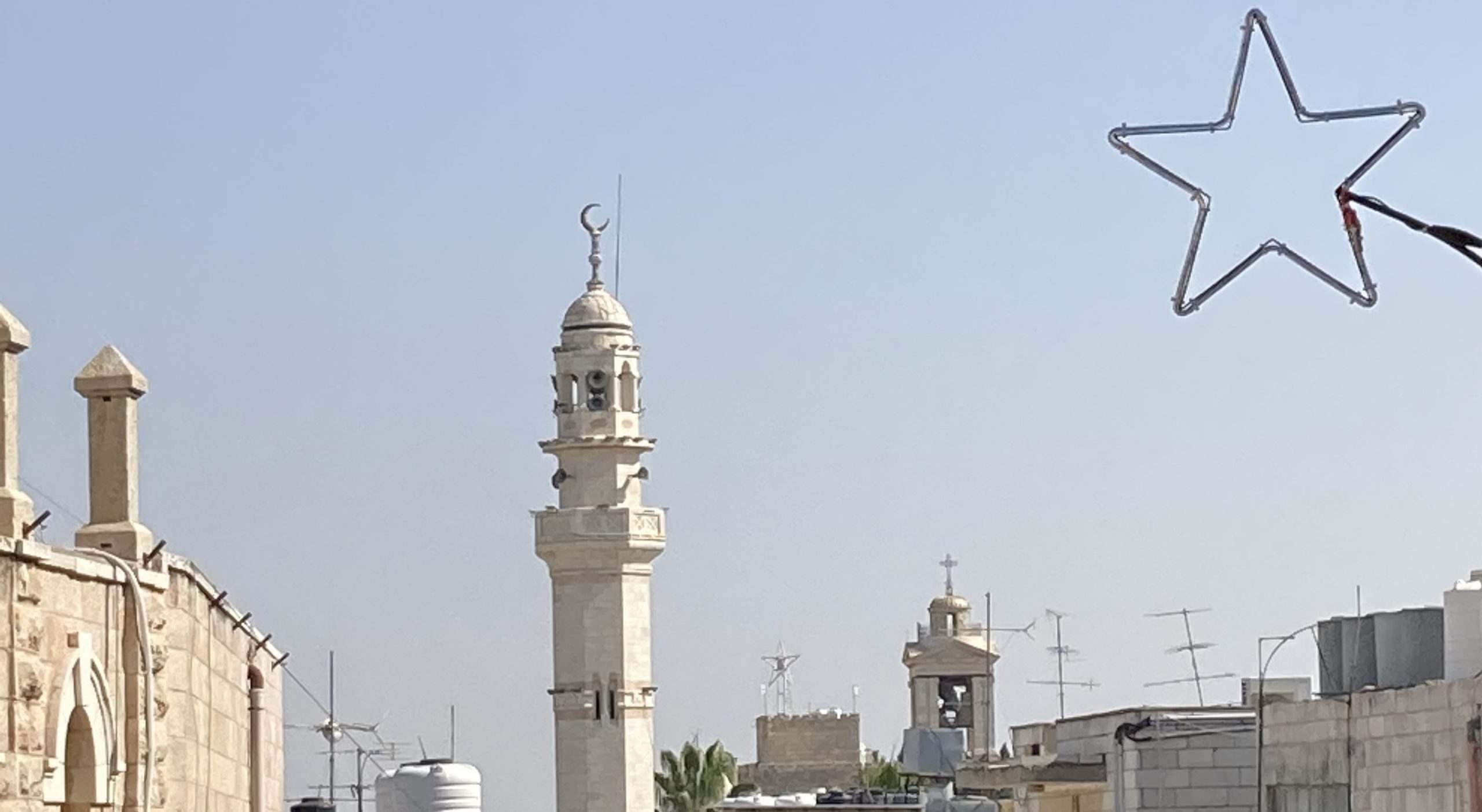In those days when I was a kid in the 1960s, Christmas was magical and merry. In these days it can seem raw and real.
Once, with little empathy or anxiety, we could hear the Scriptures tell of the Romans occupying Palestine, of Mary and Joseph being hotel-less in Bethlehem. We could read the refugee story of the holy family fleeing to Egypt, and most of us who were white Americans with no personal experience to match such things simply passed by those raw realities on the other side of the road.
In those days, and in my region of the United States, Christmas was all glitter and bows. Christmas was also, it seemed from both an advertising and a congregational point of view, nearly free of political affairs. This remained true, even though Matthew and Luke tried hard to tell us that in those days of the first Christmas, the story was dripping with the raw realities of the time. Those days mattered.
The world of retail will pull out all its merry and magical stops to inspire our purchases, but in these days of Advent and Christmas our spiritual hearts will know better. We’ll hear the story of Luke 2 differently as it opens with the familiar words, “In those days .…”
We urgently ask the question afresh: “Where is God in the midst of all this?”
Hearing those opening words again, we’ll crave a peace that passes all understanding. This year we’re apt to connect to political and social traumas, as the Gospel writers so urgently intended.
If we’re paying close attention, with open minds and hearts, when we hear of Rome oppressing Palestine, we’ll think of modern-day wars. With this Scripture story of poor people, refugees, the slaughter of children, homelessness, prejudice and a political power that seeks to crush the enemy, our bingo cards are full. When we connect “those days” with “these days,” then we are open to hearing the Christmas story in all its gore and glory.
In these days, when we, as Americans, experience divisions among us and disgust between us, when depression, anxiety and loneliness abound, when bombs are falling from the skies of Europe and the Middle East and when climate change is afflicting our planet, we need the gift of the Christ child. In these days of our culture that come marked with the sticky tags of “post-COVID,” “post-Christian” and “postmodern,” we urgently ask the question afresh: “Where is God in the midst of all this?” Our Advent carols in their minor keys are moaning with the hope we all long for “in these days.”
Then, on Christmas morning, the old Gregorian chant is sung: Hodie Christus natus est (“Today Christ is born”). “Today” is the key time-marker. The Christmas gospel isn’t a once-upon-a-time story. In fact, we proclaim that Christ is born this very day and time, born among us, in our modern mangers and stables. Advent teaches us that Christ came among us and will come again. Christmas proclaims that Christ is born today, in the present, with us at this very moment. Even if the moment isn’t perfect, even if the world is a wreck, even if we’re living our worst life, Christ is here “in these very days.”
Even if the moment isn’t perfect, even if the world is a wreck, even if we’re living our worst life, Christ is here “in these very days.”
During one of these days, while tutoring a first-grader in reading—a child whose family, I had discovered in conversation, was homeless—I gently inquired what they did at Christmastime. His head bowed. Speaking into his chest he said, “Santa Claus doesn’t come to South Carolina.” “He doesn’t?” I asked. “No,” he said, “he can’t be everywhere, so he doesn’t come here.” Realizing that this was what his parents had told him as a cover for their poverty, I didn’t confirm or deny his Christmas story. This was his raw reality.
In these days we Christians are experiencing the transition or end of many traditions, institutions and congregations, and even of this long-cherished print magazine.
With the past a memory, with the future hard to see, the present pops with purpose. Christmas joy and peace are found in our today. They aren’t found in sweet nostalgia (in those days) nor in wishful thinking (a vague someday)—but in this holy hodie, Christ is here. The Christmas story in Luke 2 begins “In those days,” then anchors the incarnation in a particular time in history and a particular place on the globe. There is great particularity to the Christmas story as it is framed around Emperor Augustus and Quirinius, Joseph and Mary of Nazareth, and unnamed shepherds in Bethlehem.
Just so, this Christmas will be anchored in our time, in our places. It will be framed by our political, cultural and social settings. We will read and hear the stories from Luke and Matthew, not for old times’ sake but to reimagine Christmas now. How does the incarnation, the coming of God to live among us, shape how we see our circumstances right now? How does the story claim us and call us anew? Because Christ is with us every day, forever born among us, and because we must ask these deep, baptismal questions each morning of our lives, Christmas Day advents renew with each pink sunrise. Venite adoremus! Come, let us adore him!









